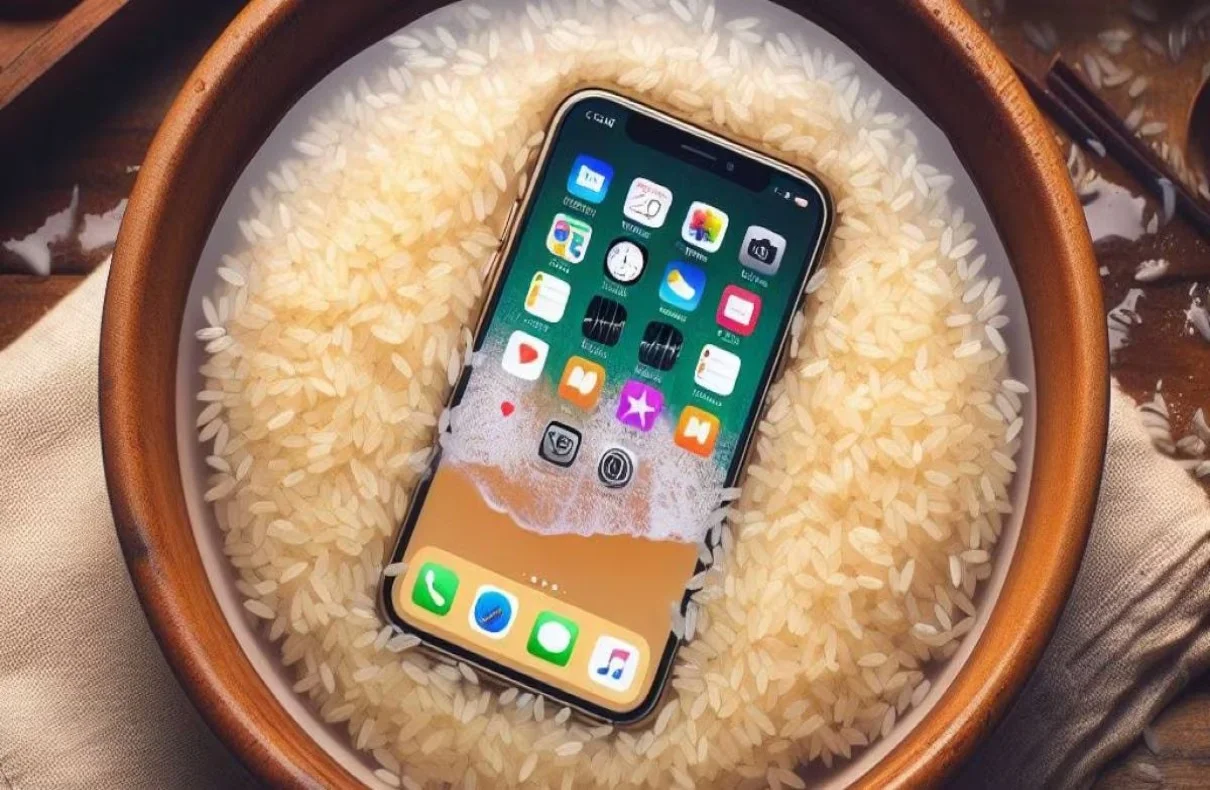When it comes to rescuing wet iPhones, the popular advice has been to place them in a bag of rice. However, recent guidance from Apple suggests that this may not be the best course of action. In this article, we will explore why drying iPhones in rice may not be effective and what alternative methods Apple recommends.
For years, the idea of using rice to dry out wet electronics has been widely circulated. The belief is that uncooked rice acts as a desiccant, drawing moisture out of the device. However, experts have long advised against this method, citing its ineffectiveness. Apple has now joined the chorus of caution, explicitly warning users not to put their wet iPhones in rice.
Why is rice drying ineffective? Firstly, rice particles can potentially cause damage to the delicate internal components of the phone. Additionally, rice does not prevent corrosion, which is a common consequence of water damage. Ultimately, relying on rice to fix a wet iPhone may prove futile and result in wasted rice.
Apple iOS 17.4 Update: Noteworthy Features and Enhancements
So, what should you do if your iPhone gets wet? Apple offers a step-by-step guide to handling a wet iPhone effectively. Here’s a summary of their recommended approach:
- Disconnect and Remove Accessories: Unplug the charging cable and any other accessories connected to your iPhone.
- Gently Remove Excess Liquid: Hold your iPhone upright with the connector port facing down. Tap it gently into your other hand to encourage any liquid to come out.
- Find a Dry Location: Place your iPhone in a safe and dry location with some airflow. Avoid using external heat sources or compressed air, as they may cause further damage.
- Let It Rest: Leave your iPhone undisturbed for at least 30 minutes, allowing it to dry naturally. Avoid the temptation to check if it is working during this time.
- Test and Charge: After the resting period, try plugging your iPhone into a charging cable to see if it functions properly. If you encounter a “liquid-detection alert” or the phone is still malfunctioning, it may need more time to dry.
- Contact Apple Support: If your iPhone continues to exhibit issues after a day of drying, it is recommended to contact Apple Support for further assistance.
Understanding the science behind water damage can shed light on why certain drying methods are ineffective. When a phone is exposed to water, it is not just the liquid itself that poses a threat. Water contains minerals and impurities that can lead to corrosion and short circuits within the device.
Furthermore, water can seep into the smallest crevices of a phone, making it challenging to remove entirely. This is why simply drying the surface of the device is often insufficient to prevent long-term damage. The internal components must also be thoroughly dried to minimize the risk of corrosion and malfunction.
Apple Drops Exciting iOS 17.4 Beta 2 Update
In addition to Apple’s recommendations, there are a few extra steps you can take to increase the chances of reviving a wet iPhone:
- Power Off: If your iPhone is still functioning after getting wet, power it off immediately. This can help prevent further damage caused by electrical shorts.
- Towel Dry: Gently wipe the exterior of the iPhone with a soft, lint-free cloth to remove any remaining moisture.
- Silica Gel Packs: If available, place your iPhone in an airtight container along with silica gel packs. These desiccants can help absorb moisture and facilitate the drying process.
Remember, prevention is always better than cure. Consider investing in a waterproof phone case or pouch to protect your iPhone from accidental water exposure. These accessories can provide an extra layer of defense and potentially save you from the stress of dealing with water damage in the first place.
